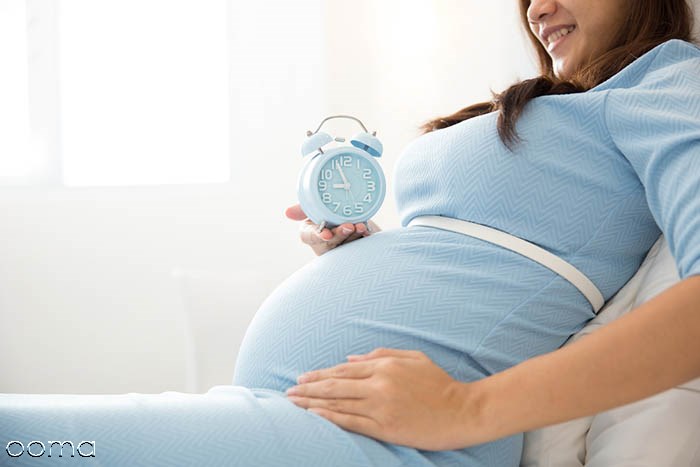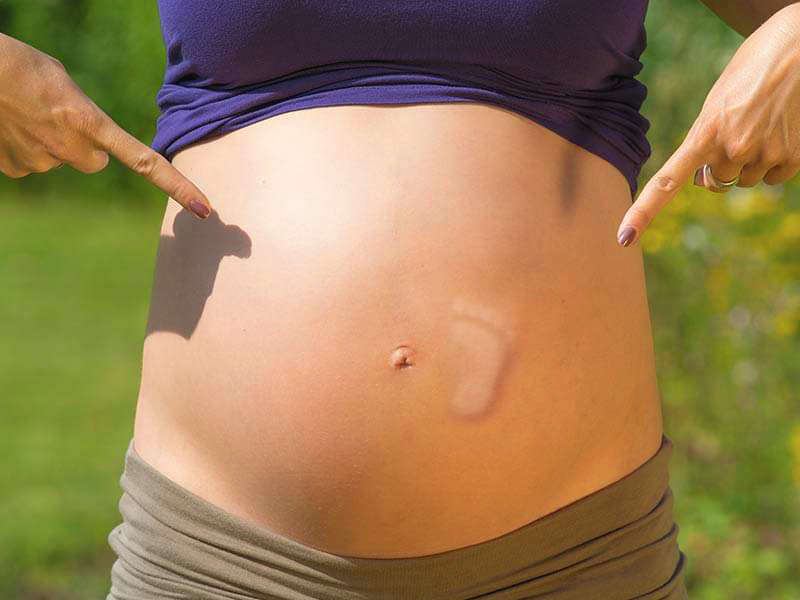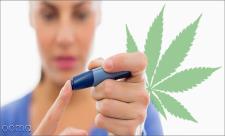
How to use the kick counter
Active babies are usually healthy babies. Babies have sleep and wake cycles in the uterus. They usually sleep short periods of 40-60 minutes at a time, but most of the time they will kick, roll, twist and turn.
From about 28 weeks, pay attention to your baby's movements on a daily basis, until delivery. We call this doing your ‘kick counts’. Once a day, lie down on your side. Count movements until you have felt 10 ‘kicks’. A ‘kick’ is any kick, roll or punch your baby makes.
There is a common misconception that you should be feeling 10 kicks over a set period, this is no longer recommended as all babies are different. Baby’s movements can vary from 4 to over 100 every hour, depending if they are awake or asleep.
However, regularly counting the time it takes to reach 10 kicks will make you more aware of your baby’s movements.
If you notice your baby is moving less than usual, or if you've noticed a change in the pattern of movements, it may be the first sign that your baby is unwell. You should contact your midwife or local maternity unit immediately so your baby's wellbeing can be assessed. There's no specific number of movements that's considered to be normal. What's important is noticing and telling your midwife about any reduction or change in your baby's normal movements.
Doctors and midwives usually recommend that you begin monitoring your baby’s movements around the 7th month of pregnancy (about 28 weeks). Around this time you will get to know your baby’s movement pattern much better, so you will be able to report any changes to your care provider.
If you notice your baby is moving less than usual, or if you've noticed a change in the pattern of movements, it may be the first sign that your baby is unwell. You should contact your midwife or local maternity unit immediately so your baby's wellbeing can be assessed. There's no specific number of movements that's considered to be normal. What's important is noticing and telling your midwife about any reduction or change in your baby's normal movements.
Doctors and midwives usually recommend that you begin monitoring your baby’s movements around the 7th month of pregnancy (about 28 weeks). Around this time you will get to know your baby’s movement pattern much better, so you will be able to report any changes to your care provider.
There are different ways to monitor a baby’s movement, therefore ask your prenatal care provider which method he or she prefers.
Counting your baby’s movements:
Find a comfortable place. You can lie down or sit in a chair with your feet up.
Start a new session when you begin counting your baby’s movements.
Continue counting by pressing the kick button each time you feel a kick until your baby has moved 10 times. Count any movements including kicks, rolls, swishes, or flutters.
If you press the kick button by mistake, you can delete the kick by pressing the small round ‘undo’ button on the right hand side.
After your baby has moved 10 times, the app will automatically stop the session and you can see the time in which you’ve recorded 10 kicks. An icon will appear for each successful session in the kick history.
Continue counting by pressing the kick button each time you feel a kick until your baby has moved 10 times. Count any movements including kicks, rolls, swishes, or flutters.
If you press the kick button by mistake, you can delete the kick by pressing the small round ‘undo’ button on the right hand side.
After your baby has moved 10 times, the app will automatically stop the session and you can see the time in which you’ve recorded 10 kicks. An icon will appear for each successful session in the kick history.
Compare the time it took to reach 10 kicks in the ‘history’ section of the kick counter. If you notice your baby is moving less than usual, or if you've noticed a change in the pattern of movements, it may be the first sign that your baby is unwell. Keep a close eye to your baby’s movements the rest of the day, to see if your baby’s pattern is indeed different as before. If you notice a considerable increase or decrease in your baby’s movements, contact your healthcare provider immediately.
You can close the application at any time - for example if you need to answer a phone call - and come back and it will resume your kick session where you left off.
If you can’t feel your baby move, try to wake the baby by drinking a cold drink or eating something sugary. Sugar during pregnancy tends to make the baby's movement increase. Of course, this is not recommended for those with diabetes or gestational diabetes. Once your baby has woken up, start counting again. If the number of movements varies from what you would expect, contact your doctor right away.
What to do if my baby doesn’t move as usual?
CALL YOUR DOCTOR, MIDWIFE OR MATERNITY UNIT IF YOU ARE EVER WORRIED OR IF YOU NOTICE A CHANGE IN YOUR BABY’S NORMAL MOVEMENTS.
This can be:
You notice a significant decrease in your baby’s activity
You notice an unusual, intense increase in your baby’s activity, followed by a significant decrease of activity
If you notice your baby is moving less than usual, or if you've noticed a change in the pattern of movements, contact your healthcare provider for further evaluation, such as a non-stress test or biophysical profile, to determine the baby’s condition within the uterus.
You notice an unusual, intense increase in your baby’s activity, followed by a significant decrease of activity
If you notice your baby is moving less than usual, or if you've noticed a change in the pattern of movements, contact your healthcare provider for further evaluation, such as a non-stress test or biophysical profile, to determine the baby’s condition within the uterus.
Please note that this App is not a medical device. We have no control over how you use the App. You are solely responsible for the correctness and completeness of your entries, and the manner in which you use the App may give inaccurate readings – please review our guide on how to use the App carefully. Please make sure to never soley rely on the App alone, e.g. for your kick, contraction, appointments and weight records, and to rely upon your nominated medical professional advisor. We cannot guarantee the uninterrupted availability of the App, because we rely on telecommunications networks and technologies, which are beyond our control.
This information is not intended to replace the advice of a trained medical doctor. Philips Consumer Lifestyle B.V. disclaims any liability for the decisions you make based on this information, which is provided to you on a general information basis only and not as a substitute for personalized medical advice.
All contents copyright © Health & Parenting Ltd 2018. All rights reserved.
امتیاز مطلب: 62%
62
























